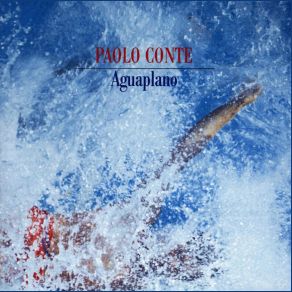Aguaplano
Download links and information about Aguaplano by Paolo Conte. This album was released in 1987 and it belongs to Jazz, Crossover Jazz, Rock, World Music, Latin, Songwriter/Lyricist genres. It contains 21 tracks with total duration of 01:15:57 minutes.

|
|
|---|---|
| Artist: | Paolo Conte |
| Release date: | 1987 |
| Genre: | Jazz, Crossover Jazz, Rock, World Music, Latin, Songwriter/Lyricist |
| Tracks: | 21 |
| Duration: | 01:15:57 |
| Buy it NOW at: | |
| Buy on iTunes $14.99 | |
| Buy on Amazon $14.49 | |
Tracks
[Edit]| No. | Title | Length |
|---|---|---|
| 1. | Aguaplano | 4:05 |
| 2. | Baci Senza Memoria | 3:18 |
| 3. | Languida | 2:18 |
| 4. | Paso Doble | 2:58 |
| 5. | Dopo Le Sei | 3:26 |
| 6. | Max | 3:42 |
| 7. | Blu Notte | 4:47 |
| 8. | La Negra | 2:46 |
| 9. | Hesitation | 3:48 |
| 10. | Ratafià | 3:00 |
| 11. | Nessuno Mi Ama | 4:44 |
| 12. | Midnight's Knock Out | 4:31 |
| 13. | Anni | 3:28 |
| 14. | Spassiunatamente | 4:04 |
| 15. | Non Sense | 3:01 |
| 16. | Les Tam - Tam Du Paradis | 3:30 |
| 17. | Amada Mia | 3:13 |
| 18. | Recitando | 4:08 |
| 19. | Gratis | 3:27 |
| 20. | Troppo Difficile | 3:21 |
| 21. | Jimmy, Ballando | 4:22 |
Details
[Edit]Paolo Conte's star was on the rise throughout the '80s, yet at the same time that his ineffable stage persona was triumphing all over Europe, his records from the period — while always eminently enjoyable — were becoming slightly less consistent than before. Benefiting from the break granted by his 1985 live release Concerti, Conte sounds definitely inspired in Aguaplano, his first studio album in three years and a strong contender for his best work ever. The only double album in Conte's discography, Aguaplano is logically the longest, but paradoxically one of the most focused projects of his entire career. One of the main reasons for this is Renzo Fantini's production,which wisely maintains a similar instrumental palette for the entire record. Compared with previous records such as Appunti di Viaggio and Paolo Conte [1994], the sound of Aguaplano seems stripped down to the bare essentials. Backed up by the familiar rhythm section of Ares Tavolazzi, Ellade Bandini, and Jimmy Villotti, Conte's trademark piano and vocal stylings take center stage in virtually every song. Impeccable horn arrangements render this already impressive set positively exquisite. Rather than individual efforts, Conte's songs in Aguaplano seem conceived as parts of an organic suite of sketches or miniatures. There may not be any immediately recognizable hits in Aguaplano, but that is a consequence of its uniform quality of mood and content. This is the rare double album worth listening to in its entirety, where the sum is greater than the parts. Which is not to say that, taken individually, the songs are not of the highest Conte standard: "Anni," "Blu Notte," "Gratis," "Ratafià," "Les Tam-Tam du Paradis..." — it is almost unfair to look for highlights in such a cohesive collection, one that seems to get better with every listening. If anything, in another rare occurrence for a double album, the second disc is probably superior to the first. Everything feels in the right place in Aguaplano, from the songwriting and arrangements down to the album art and track sequencing: it cannot be a coincidence that the record is bookended by its two greatest moments, "Aguaplano" and "Jimmy Ballando." The title track functions as a film's opening shot, zooming in from an airplane high in the air to discover the baffling spectacle of a concert piano floating at sea, a fitting welcome to a secret universe where music and sensuality (or rather, the languid sensuality derived from this kind of music) prevail over logic. The last song, "Jimmy Ballando" is a comic masterpiece in which Conte and his buddy Jimmy, two aged playboys drowsy after a pantagruelic meal, attempt for old times' sake a last dancehall seduction. Alas, their failing eyesight impedes them in seeing that the women they invite over are Chinese, killing off any possibility of verbal communication. Resigned, the two men content themselves with dancing with their unexpected partners. A brilliant farewell to the world introduced in Aguaplano, "Jimmy Ballando" represents the slow awakening from the slumber induced by a long journey of alcohol, smoke, and dancing, and the humorous realization that one may not be so young anymore, and certainly no longer in step with the times. Yet, much like the mood created by this album, it was magic while the illusion lasted.